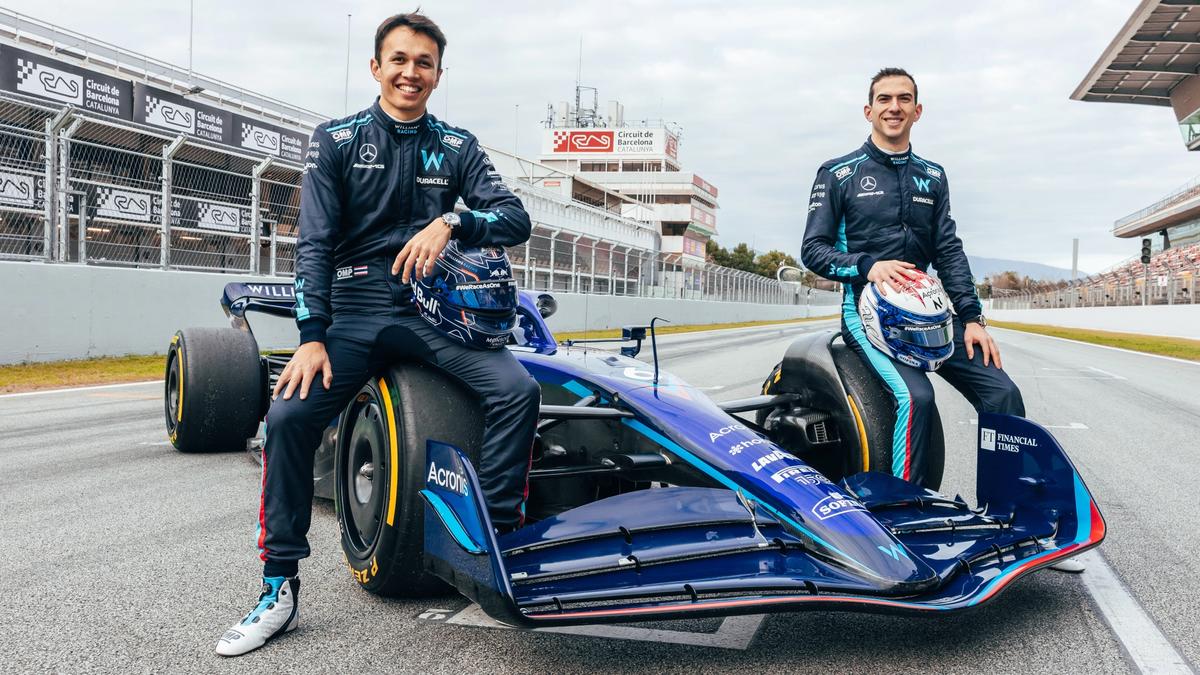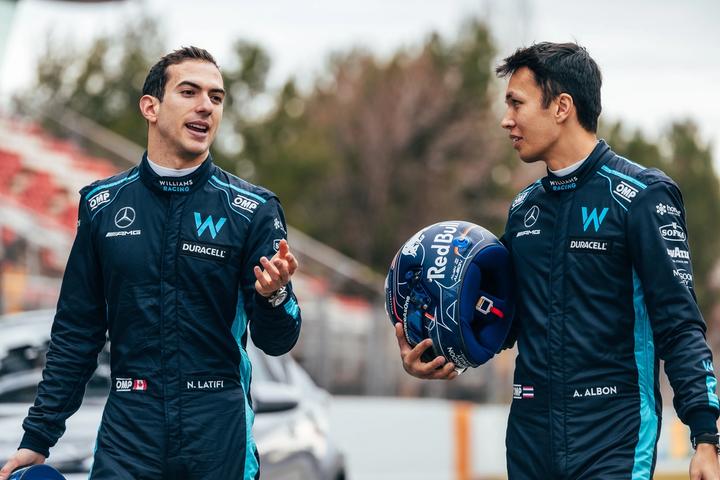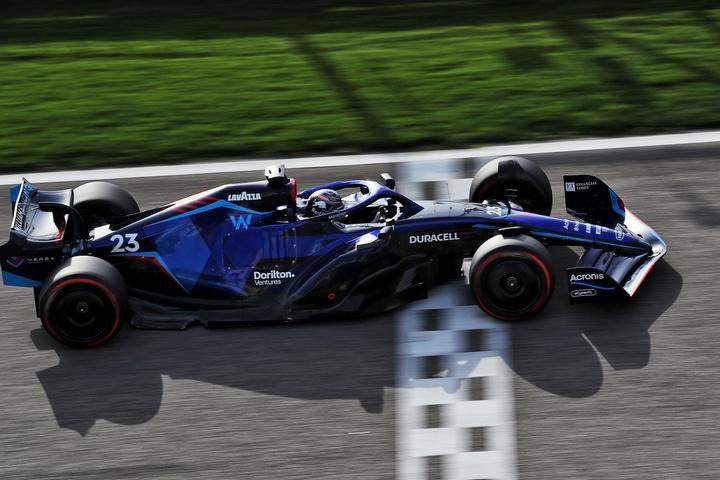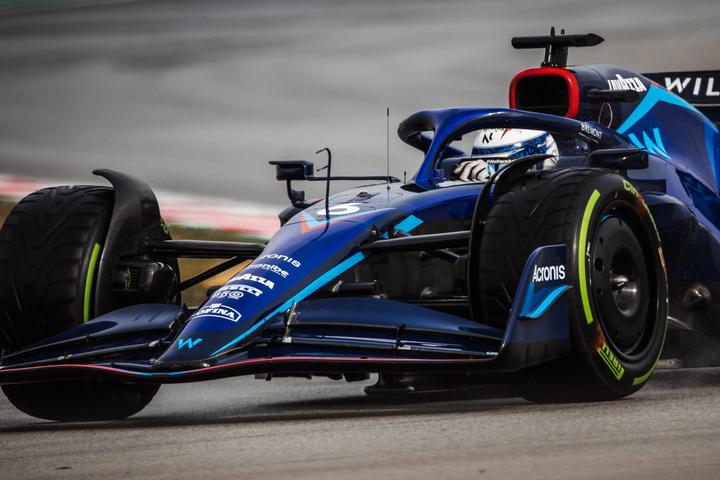If there was ever a season to get into Formula One, 2022 is undoubtedly it. The sport is riding a wave of popularity after a sensational championship fight in 2021 and the hugely popular Netflix documentary Formula 1: Drive to Survive, drawing in millions of people from every corner of the globe.
2022 represents a new dawn for F1 with a sweeping change of regulations designed to bring closer racing between the drivers and increasing the entertainment for everyone watching.
With so much going on, it's easy to feel like there's too much to understand. Thankfully, Williams Racing is here to help with our F1 2022 starter pack to get you up to speed.
What is Formula One?
Put simply, F1 is where drivers in cars race each other to establish who is the quickest racer on a racetrack. This explanation is the fundamental approach to any form of motorsport, of course – but the difference with Formula One is the groundbreaking and world-leading technology that sits inside the cars that only the very best drivers can handle.
The 'formula' part of the name refers to a set of rules that every car must follow to be permitted to enter a race, and they cover everything from the length and width of the vehicle to how much fuel they can use.
At the core of F1 are the principle rules that the sport is for single-seater cars with uncovered or 'open' cockpits and wheels. In other words, Formula One's machines are made for one person to sit in without any roof over them and with each of the four wheels exposed.
These regulations change incrementally year to year as loopholes get closed and the rule-makers make tweaks to improve racing and safety. Every so often, however, there is a year where the changes are far more significant, and all competitors effectively start with a blank sheet of paper...
The 2022 Regulation Changes
2022 brings about the most drastic change to F1 in recent memory. The designs of the car have undergone a complete overhaul to allow a driver in hot pursuit of a competitor to keep up with them better than ever before.
Rather than being wholly reliant on aerodynamics – the flow of air over the car – to push the car into the ground, the 2022 cars will also use a vacuum-like effect of air travelling under the car's floor to pull them into the track, further increasing the grip of these phenomenal machines.
New, larger tyres will feature this year, which will not only change the cars' looks but also their performance. As a double-whammy, the drivers will need to contend with colder rubber as the temperature limits for tyre blankets – used to pre-heat tyres before use – are also being lowered.
Away from the circuits, but just as impactful are updated rules governing cost and testing time. The 2021-introduced cost cap has another $5m reduction per team, down to a base of $140m. However, the testing time change for 2022 is more pronounced. The time the top team has to develop aerodynamic parts is reduced to 70% of 2020 levels, while the lowest-placed team gets 15% more.
The season has grown to a 23-race calendar, the longest in F1 history, stretching across nine months from March to November thanks to the all-new Miami Grand Prix. Counter-acting the gruelling length, a condensed weekend format is here for 2022, with media duties moving from Thursday to Friday and both Friday practice sessions running in the afternoon.
The F1 Teams
As with many other sports, F1 is a team game where the collective efforts of hundreds or thousands of employees are put against those of rival teams. Every team will design, develop, and construct two cars to compete in the championship, which is why the teams are also known as constructors.
Every F1 team fields two cars for the year with identical paint jobs – or liveries – to allow fans to identify them when they're out on track. The 2022 Williams FW44, the name of this year's car, has a striking blue livery with red accents, for example.
F1 Engines
2022 will have 10 constructors, each with their own interpretation of the rules. While each of the teams' cars may look the same, there are subtle but considerable differences across almost every element of each car.
One integral part that some teams share is the engine – also called the power unit. This year each constructor will use a power unit from either Mercedes, Renault, Red Bull, or Ferrari, with Williams being one of four teams utilising Mercedes power.
Unlike the engine in a road car that you and I drive, these are the most efficient and innovative pieces of engineering anywhere in the world, comprising of several components that each extract and reuse an optimal amount of power.
The F1 Drivers
With each constructor in F1 fielding two cars for a championship season, it's perhaps not too surprising that there are two full-time drivers at every team. While it may seem that anyone with a driving licence could sit in the cockpit of the 20 cars, that couldn't be further from the truth.
Nicky and Alex will pilot the FW44 in 2022
The modern-day F1 driver is an athlete through and through, just like a football player or Olympian. The physical exertion of an F1 car today is so extreme that the driver will lose over two kilograms of weight from the start of a race to the chequered flag falling.
Each driver will repeatedly contend with high levels of g-force over not only the Grand Prix but the practice and qualifying sessions, too. When cornering, this can be as high as 6 g – that is six times the weight of the driver – pushing against their body. Under braking, the load can reach 5 g giving these athletes little room to rest as they hurtle around a circuit up to 78 times in two hours.
Drivers and Constructors
Drivers can switch teams between seasons and occasionally during an ongoing championship, as the teams vie to sign the best racers to drive for them. Williams have Nicholas Latifi and Alex Albon for the 2022 season, with Nicky racing in his third F1 season with us and Albono joining from Red Bull after a season competing in another series.
Even with a pair of race drivers, most teams, including Williams Racing, have further drivers in their arsenal to assist with preparing and improving the car throughout the year in state-of-the-art simulators.
Hot prospects Logan Sargeant, Zak O'Sullivan and Ollie Gray are all part of the Williams Racing Driver Academy, all of whom race in junior motorsports series.
How to win in F1
Just like there are rules governing a car’s design, there are also clear rules on how each competitor can race to victory over the year. The driver or team that scores more points than their peers over a championship year will be crowned the champion at the end of the season.
F1 is all about getting to the finish line first
The winner of a race, known as a Grand Prix, is the driver who reaches the finish line first over the course of a 305km race. Each round takes place on a circuit rather than an oval, as sometimes seen in other motorsport series, with F1 visiting 23 venues across five continents for the 2022 season.
Points
The winner of a Grand Prix scores 25 points towards their season's total, with second-place taking 18, all the way down to a single point for finishing in tenth. An additional point is available for the driver who sets the fastest lap time in a race – but only if they finish in the top 10.
Whenever a driver scores a point, they also win a point for their team. These points go into two concurrent competitions – the World Drivers' Championship and the World Constructors' Championship.
Once the final race is over, the driver and team at the top of the standings will be crowned champions of that season – something that we at Williams have enjoyed 16 times in our 44-year history.
An F1 Race Weekend
Each of F1's 2022 Grands Prix will begin with the first practice session on a Friday and conclude with the race on a Sunday. During a standard weekend, the teams and drivers can test and find the optimal setup for the car over three practice sessions – two on Friday and one on Saturday.
Qualifying
Once practice is over, the lineup for the race gets decided in an hour-long qualifying session on Saturday. Qualifying is split into three sections known as Q1, Q2, and Q3. Every driver will take to the track to set their fastest lap time to start the race as high up the order as possible.
At the end of Q1, the drivers with the slowest five lap times are eliminated and will start the race in the order they finished. The remaining 15 have their times reset for Q2, so they must set another fast lap as the five slowest drivers will be eliminated again.
By the final Q3 session, there is a top 10 shootout where the fastest 10 drivers of the day have their times reset one last time and will race around the circuit to try and take pole position and start the race in first place.
Shop the Williams Racing 2022 Team Kit
Proudly show your support for Williams everywhere you go and wear the kit that Nicholas Latifi and Alex Albon will be donning throughout the 2022 Formula One season.
The Race
Sunday is for the main event – the Grand Prix itself. The 20 drivers and 10 teams will line up in a two-by-two formation on the start/finish straight. All eyes go to the five starting lights, which illuminate in red one by one. Once all five are lit, there is a short delay before the lights go out and the race begins.
The number of laps varies from race to race as each circuit has distinct lengths to hit the 305km race distance. For example, the shortest track at Monaco is a tight and twisty 2.1-mile circuit on iconic the streets of Monte Carlo, which contrasts against Belgium's forest-located Spa-Francorchamps circuit at over double Monaco’s length.
Sprint
Returning for 2022 for three Grands Prix after its trial in 2021 is F1 Sprint. At the Emilia-Romagna, Austria, and Sao Paulo rounds, the Friday and Saturday schedules will be altered to have qualifying on Friday after just one practice session. Then, on Saturday, a second practice takes place ahead of a much shorter 100km race known as Sprint.
Qualifying dictates the order for this race, and the finishing positions of Sprint will set the starting order for the Grand Prix on Sunday. New for 2022 are the points on offer for the top eight finishers in Sprint – 2021 only rewarded the top three Sprint finishers.
Reduced points
A seemingly minor change is the allocation of points if a race is cut short. In the past, F1 awarded half points to the top ten if a race had to stop before 75% of its distance was complete.
That changes for 2022, where a sliding scale of points and the positions that receive points is introduced depending on how many laps of racing were complete.
For those that like things tidy, all points given out will be rounded to whole numbers to prevent half points from littering the standings throughout the year.
F1 Pit Stops
If you've watched F1 before, even briefly, you'll probably know the cars aren't the only fast parts of a race weekend, with lightning-quick pit stops being a prominent part of a Grand Prix.
Nicky pits for a change of tyres
With every microsecond counting, pit stops are often under 3-seconds in a modern F1 race, largely thanks to the banning of refuelling. That's right, these jet fighters on wheels carry enough fuel to race for 305km at speeds of up to 360km/h!
A pit stop is where a team repairs any damage to the car but is ordinarily used to replace a driver's tyres with a fresh set of rubber for the remaining laps.
The Tyres
F1 has one tyre supplier in Pirelli, who provide five different types of tyre 'compounds' for each Grand Prix – three varieties of dry tyres and two wets.
The dry tyres are entirely smooth with no tread for maximum grip on a track's surface. The three compounds available are softs – the grippiest but quickest to degrade, hards – tyres with the least traction but last the longest, and mediums that sit somewhere in between.
Fans can spot which is being used by the colour on the outside of the tyre: red is soft, yellow is medium, and white is for hards.
Dry and Wet Tyres
In a dry race, a driver must use at least two tyre compounds before the end of the Grand Prix meaning every driver will have at least one pit stop. If the driver had qualified in the top ten, they must also start the race on the exact same set of tyres they used when they set their fastest Q2 lap.
Nicky tests out the green-walled Intermediate tyres
However, in a wet race, there is no requirement for a pit stop and some teams may try to win by using only one set of Pirellis. Only when the rain is pouring will you see a car with the blue-walled full wet tyre.
The green-walled Intermediate tyres are called upon when the racetrack is damp or drying. Both the Wets and Intermediates have tread to help clear water from underneath the tyre.
We Are Williams 2022
As for Williams, 2022 is a new start, too. We have high hopes for the FW44, designed by the excellent team at our Oxfordshire-based headquarters. With over four decades of F1 experience, we know a thing or two about a regulation change, which is why Williams continue to be one of the most successful teams in sport's history.
With the exciting partnership of Nicky and Alex heading up our drivers and our Academy in support, Williams have a high calibre of racers throughout our ranks.
We have a proud past and a promising future, so there's little wonder why Williams continue to be a fan-favourite constructor. We are making sure that we will keep you as part of the team with our all-new website and app for 2022.
Sign up today!
You'll unlock your very own driver card and officially become a member of the Williams Racing team.
Sign up now, and you'll be given your Williams Racing Driver Card ready for the season. 2022 will be another great year in Formula One, and we can't wait to have your support.
Related Tags:
Powered By
© the Williams Group, under licence to Williams IP Holdings LLC
Williams Grand Prix Engineering Limited is a company registered in England and Wales under company number 1297497.
Its registered office is at Grove, Wantage, Oxfordshire, OX12 0DQ
Powered By








